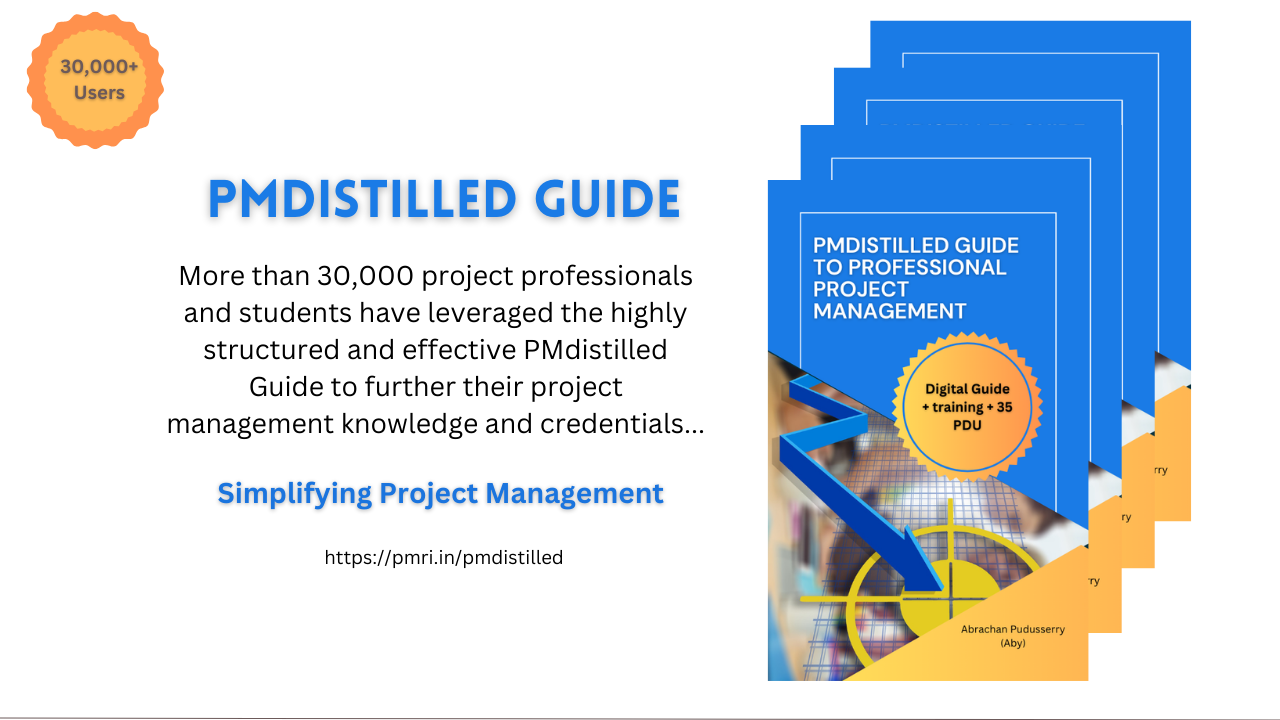Forum breadcrumbs - You are here:PMdistilled ForumExample Category: PMdistilled forumDifference between PERT and CPM
Difference between PERT and CPM
pmdistilled@pmdistilled
75 Posts
Quote from pmdistilled on 03/05/2024, 11:53 AMPERT (Program Evaluation and Review Technique) and CPM (Critical Path Method) are both project management techniques used to plan and schedule tasks in a project. While they are similar in many ways, there are some key differences between them:
- Focus:
- PERT focuses on estimating the time required to complete each task in a project, especially when there is uncertainty in task durations. For each task, three estimates are estimated - Optimistic, Pessimistic and the Most likely.
- CPM focuses on identifying the critical path in a project, which is the longest sequence of dependent tasks that determines the minimum time required to complete the project.
- Uncertainty:
- PERT is particularly useful when there is uncertainty in task durations. It uses three time estimates for each task (optimistic, pessimistic, and most likely) to calculate an expected duration using a weighted average.
- CPM assumes that task durations are known with certainty and does not explicitly account for uncertainty in task durations.
- Result Interpretation:
- PERT provides a range of possible project completion times, along with probabilities associated with each completion time, which helps in assessing project risk.
- CPM provides a single deterministic project duration based on the critical path, which helps in identifying tasks that must be closely monitored to ensure the project stays on schedule.
PERT (Program Evaluation and Review Technique) and CPM (Critical Path Method) are both project management techniques used to plan and schedule tasks in a project. While they are similar in many ways, there are some key differences between them:
- Focus:
- PERT focuses on estimating the time required to complete each task in a project, especially when there is uncertainty in task durations. For each task, three estimates are estimated - Optimistic, Pessimistic and the Most likely.
- CPM focuses on identifying the critical path in a project, which is the longest sequence of dependent tasks that determines the minimum time required to complete the project.
- Uncertainty:
- PERT is particularly useful when there is uncertainty in task durations. It uses three time estimates for each task (optimistic, pessimistic, and most likely) to calculate an expected duration using a weighted average.
- CPM assumes that task durations are known with certainty and does not explicitly account for uncertainty in task durations.
- Result Interpretation:
- PERT provides a range of possible project completion times, along with probabilities associated with each completion time, which helps in assessing project risk.
- CPM provides a single deterministic project duration based on the critical path, which helps in identifying tasks that must be closely monitored to ensure the project stays on schedule.
Click for thumbs down.0Click for thumbs up.0

